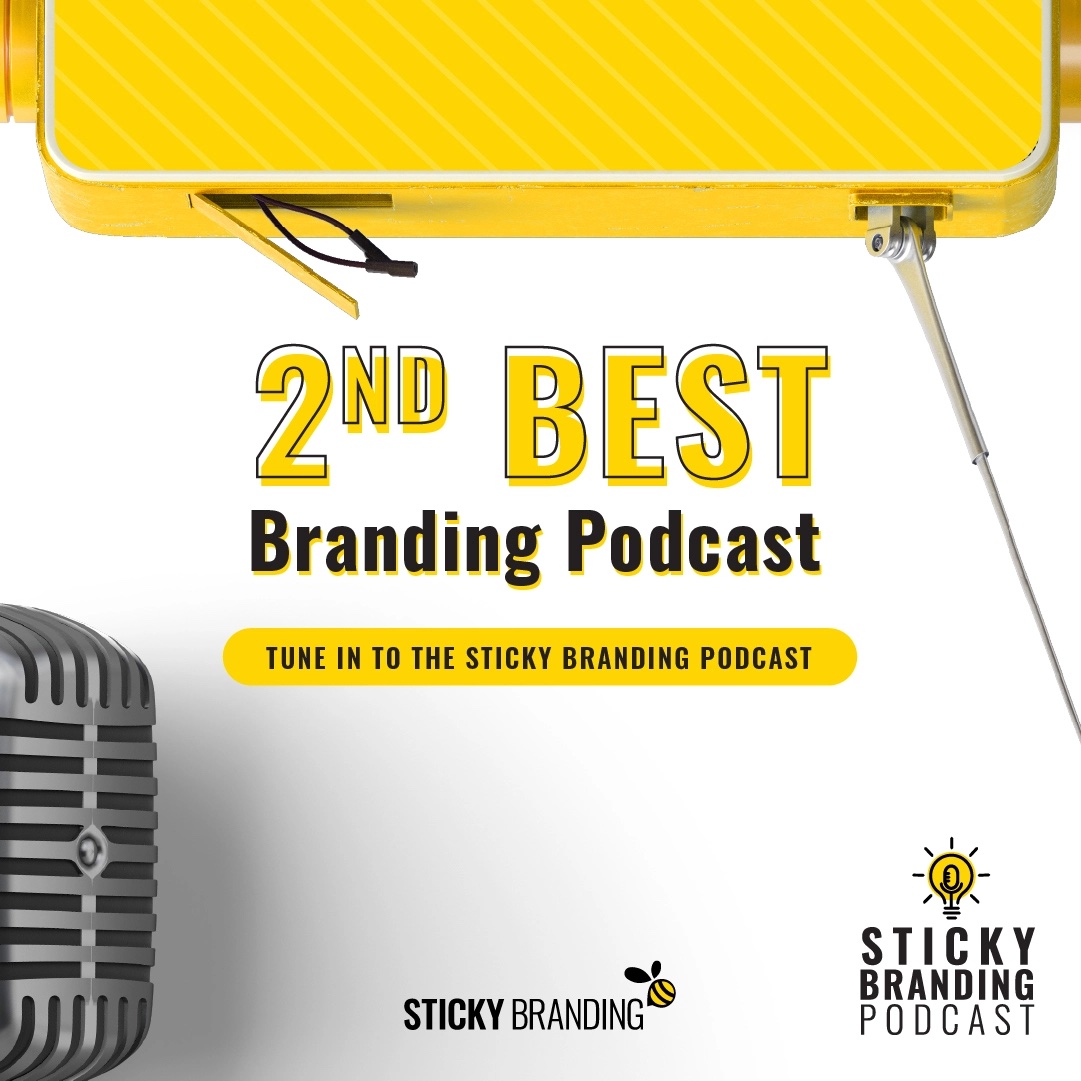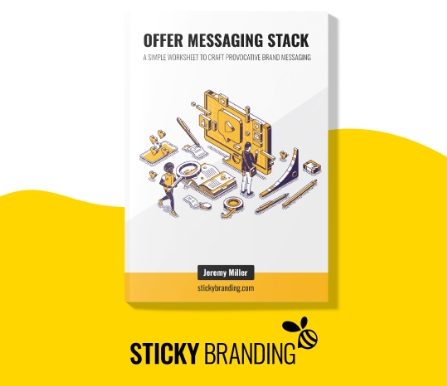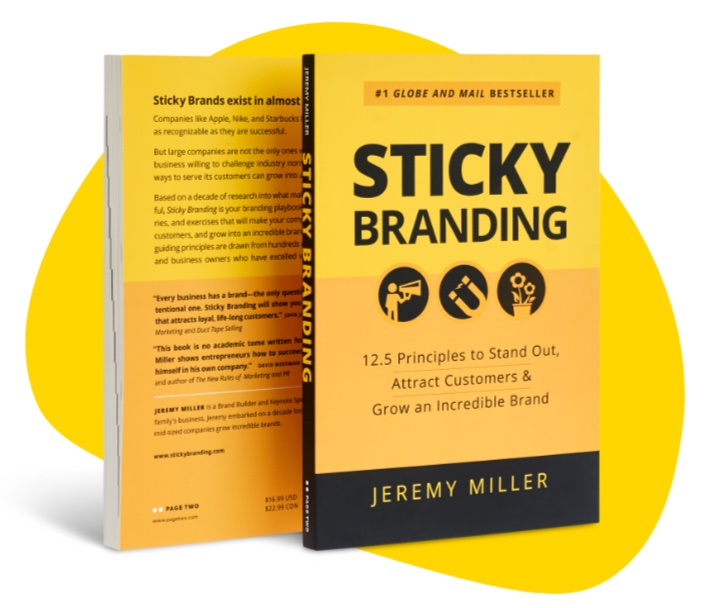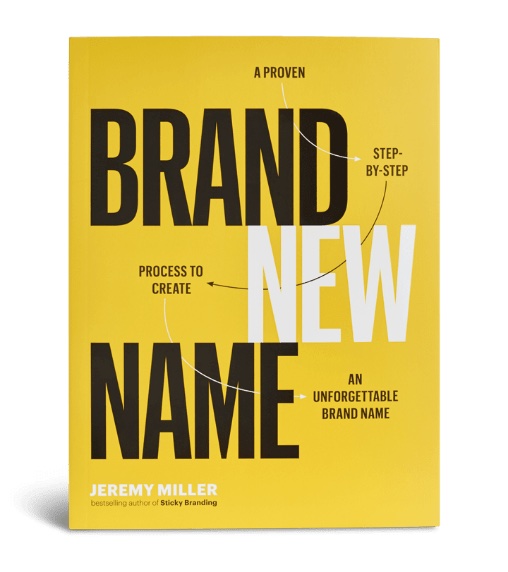This is a contentious question, and I am once again wrestling with it.
I am in the midst of redesigning the Sticky Branding website, and we’re having a big debate internally, “Do we publish our rate card?”
I don’t have the answer, but I’d like to take you through the thinking behind whether to publish your pricing on your website. My ask to you: what do you think? Should a B2B company publish its rates on its websites?
Share Price? The Hell No Stance
I have been mentored to believe publishing your prices is a big no no.
The reasons against publishing pricing are straightforward:
Sticker Shock: There’s a perceived risk that you can scare customers away. They will see the price without understanding your value proposition, and that may drive them to seek out cheaper solutions.
I can’t resist, but shoot this one down right away. If you’re customers can’t see the value proposition from your front door then you have a branding problem. Life’s too short to build your business selling to price sensitive bottom feeding customers.
Pricing is Variable: In many organizations the fee structure is variable. This is true of most professional services companies. The fee is dependent on the deliverables and amount of work performed. Publishing a rate card may not be straightforward, at least compared to pricing models used by product driven companies.
The counter argument to variable pricing is to share price from a different perspective. In my previous company, LEAPJob, our minimum fee was $9,900. This was based on recruiting sales and marketing professionals that had a salary of $45,000 or greater. We openly published that the “starting salary” for any role we took on had to be at least $45,000. This let customers self-select if their roles were in line with our services.
Don’t Educate the Competition: The other reason to avoid publishing price is you can make it too easy for your competition. They can use that intel against you.
I definitely find this a tricky issue, especially for industries that sell through a bidding process. Publishing your pricing may create an opening for the competition to slightly undercut your prices in a RFP (request for proposal) or tender.
That said, we can also overestimate the competition. As the old saying goes, mimicry is the highest form of flattery. If the competition is copying your services and pricing models then your company is defining the brand category and industry expectations. The strength is in your favor.
Price is a Segue: My number one reason for not publishing price up until now is it’s a great call to action. When someone is ready to discover the price it’s time for a conversation. They are receptive to a sales call, and you can accelerate the sales process by getting the customer on the phone.
Positioned to Negotiate: The other major sticking point for publishing price, and this one really does concern me, is it sets up the customer to negotiate. For example, the customer sees a service is $10,000 but they say, “We love it, but we’ll only pay $8,000.”
Engaging in a price negotiation at the start of a sales cycle is dangerous. It’s not the way I want to start a relationship. I don’t have the experience to know if this situation is real or not, but it does give me cause for concern.
Publish Your Pricing? The Hell Yes Point of View
Even though my background says not to publish price my gut is taking me in a different direction. The internet has changed expectations. We live in an information rich market, and if customers want the price then give it to them.
Price is Everywhere: Price isn’t hard to find anymore.
We first got conditioned to discover the price by the car companies. You can configure any car and their websites will give you the exact price. This practice has extended well beyond the automotive industry now. Most software companies have a section titled “Pricing,” and it’s super easy to find: Salesforce.com, Buffer, Hubspot, InfusionSoft.
And even if the price isn’t published on a company’s website you can usually get it from an existing customer on social media. Ask the question on Twitter or Facebook, and if the company is large enough (or prominent enough) you’ll get an answer.
Published Pricing Saves Time: Let your customers determine if your services are a fit.
One of my biggest priorities is to drive Velocity into the buying cycle. I want to achieve the Two-Call Close — and if I could make it a One-Call Close, even better. A primary way I achieve this is through making my website sell as well as my best sales person. My thinking is any information I would give in a sales call should be on the website.
This helps me in two ways. First, it eliminates people that aren’t a fit. This saves them time, and it saves me time. Second, it positions the services by helping customers understand where the services fit in the spectrum of marketing options available to them. Price is a positioning tool.
The Customer Wants Pricing: This is the number one reason for me to publish price. If the customer wants that information then give it to them. It’s a key aspect of their decision making process. If it helps them make better buying decisions faster, it just makes sense to publish your rates proudly on your website.
Publishing your prices on your website doesn’t fulfill your value proposition or make your brand stickier, but it can whet your customers’ appetite to buy faster.
Your Turn
What’s your opinion? Should a B2B company publish its fees on its website? More specifically, should Sticky Branding publish its rates?
I can easily do it. My pricing is well defined and easy to understand. There are no surprises, and it could easily be published in a simple one-page format.
What do you think?





